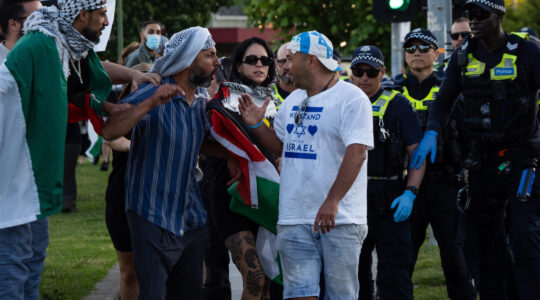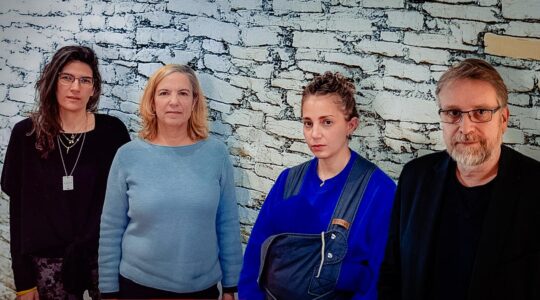WARSAW, Poland (JTA) – The Jewish Historical Institute said it will open an exhibition dedicated to the Ringelblum Archive, which chronicles the history of the Warsaw Ghetto.
The entire archive also will be available for free on the internet, the Warsaw institute said Thursday at a news conference while presenting details of the project. Individual documents will be described not only in Polish but also in English, and some also in Hebrew.
“Often we do not see that the Ringelblum Archive is part not only of Jewish history, but Polish history as well,” said Marian Turski, vice president of the Association of the Jewish Historical Institute and an Auschwitz survivor.
Jewish Historical Institute researchers will complete work next year on the release of the final four volumes of the Ringelblum Archive, making the complete edition 36 volumes.
“Members of the archive wanted to record testimony of every Jew,” said Pawel Spiewak, director of the Jewish Historical Institute. “Their resistance to the Germans was of an intellectual nature. Their documents are the most important testimony of what happened during the Holocaust.”
The archive was initiated in 1940 by historian Emanuel Ringelblum, who established a secret organization called the Oneg Shabbat to collect documents. The group collected documents from official institutions as well as the press, and the journals and diaries of ghetto residents; German announcements, posters, leaflets and letters that managed to make it to the ghetto; food coupons, and even candy wrappers and tram tickets.
Dozens of photographs, as well as over 300 drawings and watercolors, are also part of a collection of over 30,000 items that are often the last testimonies of the lives, suffering and death not only of individuals, but also entire communities from towns and cities all over Poland.
The first part of the Ringelblum Archive was hidden at night between Aug. 2-3, 1942; the mass deportations of Warsaw Jews to the Treblinka concentration camp had begun 12 days prior. In the face of certain death, a decision was made to secure the archive so it could serve as a testimony concerning the fate of an exterminated nation.
The cellar of the Ber Borochow Jewish School at 68 Nowolipki St. was chosen as a hiding place. The school’s principal, Izreal Lichtensztajn, a member of Oneg Shabbat and one of Ringelblum’s closest and most trusted colleagues, and two of his students — Dawid Graber and Nachum Grzywacz — packed the collected documents into 10 metal crates and buried them in the basement.
JTA has documented Jewish history in real-time for over a century. Keep our journalism strong by joining us in supporting independent, award-winning reporting.





